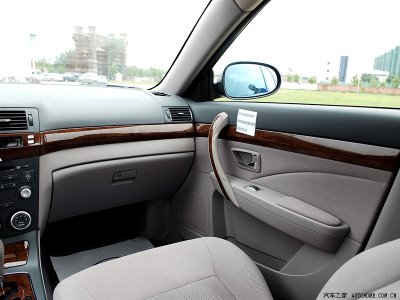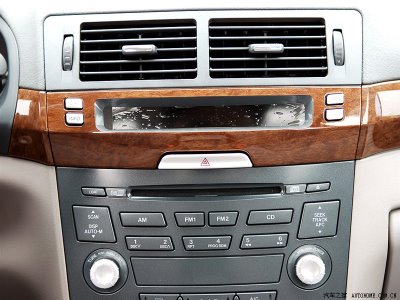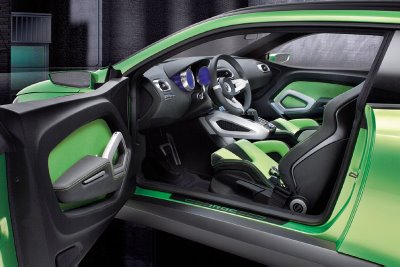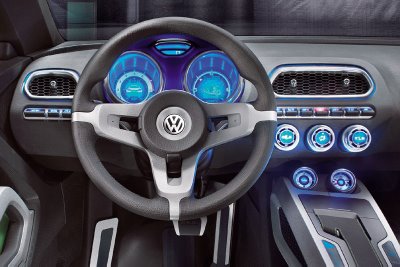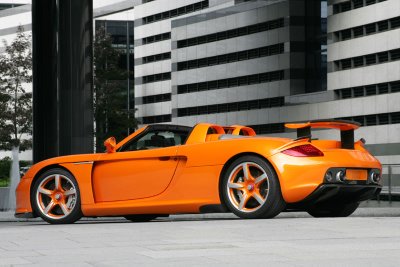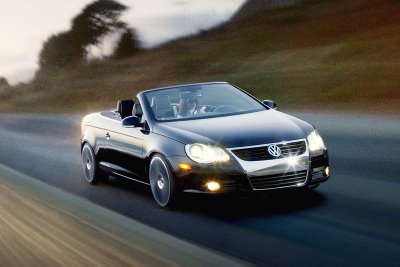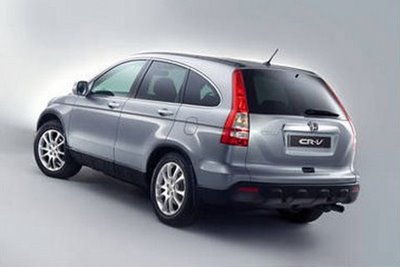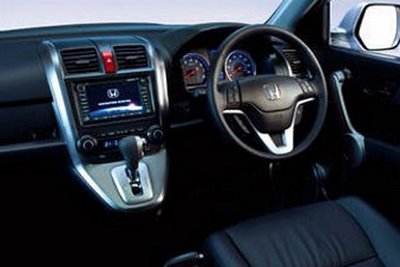Thursday, August 31, 2006
Wednesday, August 30, 2006
Proton Reports RM58.6 Million First-quarter Loss
KUALA LUMPUR, Aug 29 (Bernama) -- Proton Holdings Bhd announced Tuesday that its after-tax loss rose to RM58.649 million in the first quarter ended June 30, 2006, from RM12.661 million in the corresponding quarter of the previous year.
Its pre-tax loss increased to RM95.536 million from RM7.361 million as revenue dropped to RM1.418 billion from RM2.054 billion previously.
In a statement, Proton attributed the loss to a decline in total car sales in the country and the lack of a fresh line-up of car models as the company transitioned to several new models starting in 2007.
Proton's car sales for the first quarter stood at 32,200 units, compared to 44,367 units for the corresponding period last year.
The drop in auto purchases was proportionate to industry trends, where sales across the board declined by five percent in the first half of the year against a year earlier, the national car maker said.
"While overall industry sales have dipped, Proton has been affected mainly by the lack of new car models. The bulk of our models have been in the market for several years now while the market is seeking something more fresh and exciting," said managing director Syed Zainal Abidin Syed Mohamed Tahir.
The Proton Saga was first introduced in 1985 while the Wira was launched in 1993, the Perdana in 1995.
Proton's Waja was launched in 2000 and the Gen.2 Campro was rolled out in 2004.
The national car maker's latest models are the Savvy, available since last year, and the Satria Neo which was launched middle of this year.
Proton's sales were further affected by loan terms, interest rates and lower used car values which required a higher cash top-up to switch to a new car, Syed Zainal Abidin said.
Expectations among consumers that car prices would fall further also fuelled the decline, according to him.
Syed Zainal Abidin said while cost-cutting measures and better implementation of component sourcing were bearing fruit, promotional and marketing costs have risen.
"These expenses were recorded in the first quarter though the results of this promotion will only be visible in the upcoming quarter," he explained.
As an early indication, Proton's car sales in July rose 21 percent from the previous month, the company said.
Registration of Proton cars with the Road Transport Department in July stood at 10,018 compared to 8,328 recorded in June, while total industry volume increased by five percent.
Proton said its latest model, Satria Neo, has been well-received.
Since its launch in June, 2,750 vehicles were sold with 4,000 orders in hand, surpassing Proton's expectations for the niche three-door hatchback.
"This is again evidence that the market wants new cars. Because the development of new cars takes up to two years, Proton can only address this issue around next year," Syed Zainal Abidin said.
He said the first-quarter losses were balanced by several initiatives which were implemented since the beginning of this year.
These included cost-cutting measures, reduction in operational expenses and streamlining the procurement of components where Proton now sources raw material in bulk for local vendors, he added.
Its consolidation and renegotiation with component vendors as well as the implementation of electronic bidding and procurement systems, were also constantly being reviewed, Syed Zainal Abidin said.
To improve the next quarter's performance, he said that Proton would continue to focus on improving operational efficiencies, while simultaneously accelerating its implementation.
At the same time, Proton would continue to strengthen its performance in the domestic market while promoting export growth, he added.
"Proton's continuous efforts to improve quality have resulted in better customer satisfaction. Warranty claims for Proton's latest additions of Savvy and Satria Neo have been kept minimal at an average of 0.5 percent," Syed Zainal Abidin said.
"Our other key focus is to enhance cost competitiveness, more effective use of resources, and to introduce a bigger variety of new models over the next year or two," he said.
-- BERNAMA
Proton's net loss widens to RM58.65m in 1Q
Proton Holdings Bhd's net loss widened by 375% to RM58.65 million in the first quarter ended June 30, 2006 from a loss of RM12.35 million a year earlier due to lower sales amidst a competitive environment.
It said on Aug 29 that the wider loss was due to a decline in total car sales and the lack of a fresh line-up of car models at Proton as it transitioned to several new models starting next year.
Proton car sales for Q1 fell 27% to 32,200 units from 44,367 a year earlier.
Revenue fell 30.7% to RM1.42 billion from RM2.05 billion. At pre-tax level, its loss totalled RM95.54 million against a loss of RM7.36 million a year earlier.
Its managing director Syed Zainal Abidin Syed Mohamed Tahir said the bulk of its models had been in the market for several years. "The market is seeking something more fresh and exciting.”
He said Proton sales were affected by loan terms, interest rates and lower used car value, which required a higher top up to switch to a new car.
Syed Zainal said its promotional and marketing costs rose in its 1Q, the results of which would only be visible in the next quarter.
He added that as an early indication, Proton’s car sales last month rose 21% from the previous month.
It said registration of Proton cars with the Road Transport Department in July stood at 10,018 units compared with 8,328 units in June, while total industry volume rose by 5%.
He said it had sold 2,750 units of its latest model, Satria Neo, with another 4,000 orders in hand since its launch in June, surpassing its expectations for the niche three-door hatchback.
Syed Zainal said the 1Q losses were balanced by several initiatives since early this year, including cost cutting measures, reduction in operational expenses and streamlining of procurement.
“Our other key focus is to enhance cost competitiveness, more effective use of resources, and to introduce a bigger variety of new models over the next year or two,” he added.
Its pre-tax loss increased to RM95.536 million from RM7.361 million as revenue dropped to RM1.418 billion from RM2.054 billion previously.
In a statement, Proton attributed the loss to a decline in total car sales in the country and the lack of a fresh line-up of car models as the company transitioned to several new models starting in 2007.
Proton's car sales for the first quarter stood at 32,200 units, compared to 44,367 units for the corresponding period last year.
The drop in auto purchases was proportionate to industry trends, where sales across the board declined by five percent in the first half of the year against a year earlier, the national car maker said.
"While overall industry sales have dipped, Proton has been affected mainly by the lack of new car models. The bulk of our models have been in the market for several years now while the market is seeking something more fresh and exciting," said managing director Syed Zainal Abidin Syed Mohamed Tahir.
The Proton Saga was first introduced in 1985 while the Wira was launched in 1993, the Perdana in 1995.
Proton's Waja was launched in 2000 and the Gen.2 Campro was rolled out in 2004.
The national car maker's latest models are the Savvy, available since last year, and the Satria Neo which was launched middle of this year.
Proton's sales were further affected by loan terms, interest rates and lower used car values which required a higher cash top-up to switch to a new car, Syed Zainal Abidin said.
Expectations among consumers that car prices would fall further also fuelled the decline, according to him.
Syed Zainal Abidin said while cost-cutting measures and better implementation of component sourcing were bearing fruit, promotional and marketing costs have risen.
"These expenses were recorded in the first quarter though the results of this promotion will only be visible in the upcoming quarter," he explained.
As an early indication, Proton's car sales in July rose 21 percent from the previous month, the company said.
Registration of Proton cars with the Road Transport Department in July stood at 10,018 compared to 8,328 recorded in June, while total industry volume increased by five percent.
Proton said its latest model, Satria Neo, has been well-received.
Since its launch in June, 2,750 vehicles were sold with 4,000 orders in hand, surpassing Proton's expectations for the niche three-door hatchback.
"This is again evidence that the market wants new cars. Because the development of new cars takes up to two years, Proton can only address this issue around next year," Syed Zainal Abidin said.
He said the first-quarter losses were balanced by several initiatives which were implemented since the beginning of this year.
These included cost-cutting measures, reduction in operational expenses and streamlining the procurement of components where Proton now sources raw material in bulk for local vendors, he added.
Its consolidation and renegotiation with component vendors as well as the implementation of electronic bidding and procurement systems, were also constantly being reviewed, Syed Zainal Abidin said.
To improve the next quarter's performance, he said that Proton would continue to focus on improving operational efficiencies, while simultaneously accelerating its implementation.
At the same time, Proton would continue to strengthen its performance in the domestic market while promoting export growth, he added.
"Proton's continuous efforts to improve quality have resulted in better customer satisfaction. Warranty claims for Proton's latest additions of Savvy and Satria Neo have been kept minimal at an average of 0.5 percent," Syed Zainal Abidin said.
"Our other key focus is to enhance cost competitiveness, more effective use of resources, and to introduce a bigger variety of new models over the next year or two," he said.
-- BERNAMA
Proton's net loss widens to RM58.65m in 1Q
Proton Holdings Bhd's net loss widened by 375% to RM58.65 million in the first quarter ended June 30, 2006 from a loss of RM12.35 million a year earlier due to lower sales amidst a competitive environment.
It said on Aug 29 that the wider loss was due to a decline in total car sales and the lack of a fresh line-up of car models at Proton as it transitioned to several new models starting next year.
Proton car sales for Q1 fell 27% to 32,200 units from 44,367 a year earlier.
Revenue fell 30.7% to RM1.42 billion from RM2.05 billion. At pre-tax level, its loss totalled RM95.54 million against a loss of RM7.36 million a year earlier.
Its managing director Syed Zainal Abidin Syed Mohamed Tahir said the bulk of its models had been in the market for several years. "The market is seeking something more fresh and exciting.”
He said Proton sales were affected by loan terms, interest rates and lower used car value, which required a higher top up to switch to a new car.
Syed Zainal said its promotional and marketing costs rose in its 1Q, the results of which would only be visible in the next quarter.
He added that as an early indication, Proton’s car sales last month rose 21% from the previous month.
It said registration of Proton cars with the Road Transport Department in July stood at 10,018 units compared with 8,328 units in June, while total industry volume rose by 5%.
He said it had sold 2,750 units of its latest model, Satria Neo, with another 4,000 orders in hand since its launch in June, surpassing its expectations for the niche three-door hatchback.
Syed Zainal said the 1Q losses were balanced by several initiatives since early this year, including cost cutting measures, reduction in operational expenses and streamlining of procurement.
“Our other key focus is to enhance cost competitiveness, more effective use of resources, and to introduce a bigger variety of new models over the next year or two,” he added.
Tuesday, August 29, 2006
New system to collect toll next March
KUALA LUMPUR: A pilot project to ensure smooth traffic flow along tolled highways is expected to be implemented in March next year.
Under the multi-lane free flow (MLFF) electronic toll collection system, the toll charges will be deducted electronically as vehicles bearing transponders pass the tollbooths.
However, the area where the project is to be implemented has yet to be determined.
A committee comprising officials from the Works Ministry, Malaysia Highway Authority (MHA), toll concessionaires and Rangkaian Segar, the operator of the Touch ’n Go electronic payment system and SmartTAG, have been meeting since May last year to work out the finer details.
In a paper presented at a recent seminar on intelligent transport system in road network operations, MHA’s Ismail Md Salleh said the MLFF was expected to reduce congestion at toll plazas, be environmentally friendly and increase road safety.
The system is extensively used in Australia, United States, Chile and Canada.
Some of the advantages include improved traffic flow, reduction in travel time, savings on fuel and cutting down vehicle wear and tear.
Ismail said for the successful implementation of MLFF, certain changes had to be made to the present system.
He said the existing legal framework was not suitable for MLFF implementation because it was not efficient in handling toll violators.
“There is a need to establish a comprehensive legislative framework and infrastructure for the enforcement of violations,” he added.
He said the move from the existing electronic toll collection system to MLFF also required new investment from the toll concessionaires for infrastructure development.
Ismail said only 35% of total toll collection was electronic collection and efforts should be made to increase this.
The first electronic toll collection was implemented in 1995 and as of today, a total of 1,459km of expressways are equipped with a single electronic toll collection (ETC) system.
“With the adoption of a single ETC system, Malaysia has achieved nationwide interoperability for the existing 18 toll concession companies. It is ahead of many countries in this,” Ismail added.
Works Minister Datuk Seri S. Samy Vellu said there had been several discussions between the various concessionaires and agencies on the implementation of MLFF.
Under the multi-lane free flow (MLFF) electronic toll collection system, the toll charges will be deducted electronically as vehicles bearing transponders pass the tollbooths.
However, the area where the project is to be implemented has yet to be determined.
A committee comprising officials from the Works Ministry, Malaysia Highway Authority (MHA), toll concessionaires and Rangkaian Segar, the operator of the Touch ’n Go electronic payment system and SmartTAG, have been meeting since May last year to work out the finer details.
In a paper presented at a recent seminar on intelligent transport system in road network operations, MHA’s Ismail Md Salleh said the MLFF was expected to reduce congestion at toll plazas, be environmentally friendly and increase road safety.
The system is extensively used in Australia, United States, Chile and Canada.
Some of the advantages include improved traffic flow, reduction in travel time, savings on fuel and cutting down vehicle wear and tear.
Ismail said for the successful implementation of MLFF, certain changes had to be made to the present system.
He said the existing legal framework was not suitable for MLFF implementation because it was not efficient in handling toll violators.
“There is a need to establish a comprehensive legislative framework and infrastructure for the enforcement of violations,” he added.
He said the move from the existing electronic toll collection system to MLFF also required new investment from the toll concessionaires for infrastructure development.
Ismail said only 35% of total toll collection was electronic collection and efforts should be made to increase this.
The first electronic toll collection was implemented in 1995 and as of today, a total of 1,459km of expressways are equipped with a single electronic toll collection (ETC) system.
“With the adoption of a single ETC system, Malaysia has achieved nationwide interoperability for the existing 18 toll concession companies. It is ahead of many countries in this,” Ismail added.
Works Minister Datuk Seri S. Samy Vellu said there had been several discussions between the various concessionaires and agencies on the implementation of MLFF.
Friday, August 25, 2006
Pelajar cipta formula penjimatan petrol
SEREMBAN 24 Ogos – Kenaikan harga petrol mendorong tiga pelajar Sekolah Sains Sultan Haji Ahmad Shah Pekan, Pahang, mencipta formula penjimatan penggunaan petrol, dengan mencampurkan ekstrak ethanol daripada pisang dengan bahan bakar itu, tanpa menjejaskan prestasinya.
Campuran 10 peratus ethanol dan 90 peratus petrol melalui penyelidikan ‘Bio Ethanol dari Pisang Sebagai Alternatif Bahan Bakar Bio’ itu, berupaya menjimatkan 30 sen petrol seliter.
Formula itu dicipta oleh pelajar Muhammad Na’im As-Siddiq Wan Hasamudin, 17, Aminuddin Abdul Raheem, 16 dan Mohammad Ashraaf Raiez Mohammad Ridzuan, 17, yang terpilih sebagai juara Pertandingan Peringkat Kebangsaan Inovasi Sains dan Kejuruteraan 2006 di sini hari ini.
Kemenangan itu membolehkan mereka mewakili negara ke Pameran Sains dan Kejuruteraan Antrabangsa Intel di New Mexico, Amerika Syarikat (AS) pada Mei tahun depan.
Ketua Kumpulan itu, Muhammad Na’im berkata, mereka menjalankan uji kaji selama lima bulan untuk merealisasikan inovasi itu.
Katanya, pisang dipilih kerana ia boleh didapati dengan mudah dan murah di negara ini, berbanding jagung dan tebu yang digunakan untuk tujuan yang sama di AS dan Brazil.
Selain itu katanya, pisang juga mempunyai kadar gula yang tinggi berbanding buah-buahan tempatan lain.
“Pisang masak atau busuk boleh digunakan untuk tujuan esktrak ethanol, sebelum ia diperam bersama ragi selama tiga hari untuk proses penghuraian gula.
“Kemudian ia disuling di makmal bagi mendapatkan eskstrak ethanol untuk dicampur dengan petrol. Hasil uji kaji menunjukkan prestasi pembakarannya adalah menyamai petrol tulen, cuma baunya sedikit berbeza,’’ katanya.
Menurut Muhammad Na’im, kumpulannya juga akan memperbaiki formula itu sebagai persediaan untuk pertandingan di AS.
Kolej Tunku Kurshiah, Seremban memenangi tempat kedua dan ketiga pada pertandingan tajaan Intel Technology Malaysia Sdn. Bhd. itu.
Campuran 10 peratus ethanol dan 90 peratus petrol melalui penyelidikan ‘Bio Ethanol dari Pisang Sebagai Alternatif Bahan Bakar Bio’ itu, berupaya menjimatkan 30 sen petrol seliter.
Formula itu dicipta oleh pelajar Muhammad Na’im As-Siddiq Wan Hasamudin, 17, Aminuddin Abdul Raheem, 16 dan Mohammad Ashraaf Raiez Mohammad Ridzuan, 17, yang terpilih sebagai juara Pertandingan Peringkat Kebangsaan Inovasi Sains dan Kejuruteraan 2006 di sini hari ini.
Kemenangan itu membolehkan mereka mewakili negara ke Pameran Sains dan Kejuruteraan Antrabangsa Intel di New Mexico, Amerika Syarikat (AS) pada Mei tahun depan.
Ketua Kumpulan itu, Muhammad Na’im berkata, mereka menjalankan uji kaji selama lima bulan untuk merealisasikan inovasi itu.
Katanya, pisang dipilih kerana ia boleh didapati dengan mudah dan murah di negara ini, berbanding jagung dan tebu yang digunakan untuk tujuan yang sama di AS dan Brazil.
Selain itu katanya, pisang juga mempunyai kadar gula yang tinggi berbanding buah-buahan tempatan lain.
“Pisang masak atau busuk boleh digunakan untuk tujuan esktrak ethanol, sebelum ia diperam bersama ragi selama tiga hari untuk proses penghuraian gula.
“Kemudian ia disuling di makmal bagi mendapatkan eskstrak ethanol untuk dicampur dengan petrol. Hasil uji kaji menunjukkan prestasi pembakarannya adalah menyamai petrol tulen, cuma baunya sedikit berbeza,’’ katanya.
Menurut Muhammad Na’im, kumpulannya juga akan memperbaiki formula itu sebagai persediaan untuk pertandingan di AS.
Kolej Tunku Kurshiah, Seremban memenangi tempat kedua dan ketiga pada pertandingan tajaan Intel Technology Malaysia Sdn. Bhd. itu.
Naza to invest RM953m in India
Malaysian auto company Naza Automotive Manufacturing Sdn Bhd plans to invest US$259 million (RM953.01 million) in a car making plant in southern India to leverage the small car boom in the country, a newspaper report said on Aug 24.
The firm will soon sign an initial agreement with the state government of Tamil Nadu to set up the plant and may roll out its small car by late 2007, The Times of India newspaper said quoting unidentified sources.
The report said the plant will be located at Sriperumbudur, where South Korea's Hyundai Motor Co and Ford Motor Co are already present.
"The venture might also become the entry point for South Korea's Kia badged vehicles in India," the newspaper said.
The Malaysian firm was also eyeing India's growing motorcycle market, it added.
Tamil Nadu government officials could not be reached for an immediate comment.
India's passenger car vehicle market is forecast to nearly double to 2 million units by 2010. The market for small cars, more than two-thirds of the overall market, is now dominated by Suzuki Motor's Indian arm, Maruti Udyog Ltd and Hyundai Motors. - Reuters
The firm will soon sign an initial agreement with the state government of Tamil Nadu to set up the plant and may roll out its small car by late 2007, The Times of India newspaper said quoting unidentified sources.
The report said the plant will be located at Sriperumbudur, where South Korea's Hyundai Motor Co and Ford Motor Co are already present.
"The venture might also become the entry point for South Korea's Kia badged vehicles in India," the newspaper said.
The Malaysian firm was also eyeing India's growing motorcycle market, it added.
Tamil Nadu government officials could not be reached for an immediate comment.
India's passenger car vehicle market is forecast to nearly double to 2 million units by 2010. The market for small cars, more than two-thirds of the overall market, is now dominated by Suzuki Motor's Indian arm, Maruti Udyog Ltd and Hyundai Motors. - Reuters
Wednesday, August 23, 2006
Tuesday, August 22, 2006















